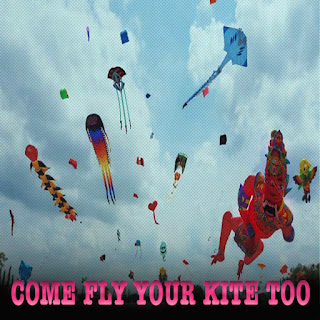Launceston's GM/CEO seems to be saying that in order to achieve 'change' in regard to the 'governance' of the QVMAG, and/or the city's cultural entities, there needs to be State Govt legislative change. While it is NOT entirely the case it is worth exploring various options.
As stated elewhere, any reasonably diligent interrogation of Tasmania's Local Govt. Act will expose a range of options for councils to change the status quo even against the recommendation of a GM has SECTION62/2 at her/his disposal.
Another understanding will be canvased here. Working on the assumption that the City of Launceston – that is the elected representatives – has the inclination or grants itself the 'authority' to bring about change there is a way forward. They DO NOT need the approval of their GM but they DO need 'the conviction' to do what their constituents call upon them to do – if and when they do, if and when they are consulted in a meaningful way.
Given the perception that there are non-core elements and activities of Local Govt that it cannot any longer, in a 21st C context, afford to 'own and operate'.it would seem that the time has come be both fiscally responsible and sensitive to ratepayers' circumstances.
Reportedly, in another context, Launceston's GM has said that, paraphrased, ratepayers do not need to make a profit. While in one sense that might be true they do not need be paying for services that are not being delivered. Quite simply they cannot afford to do so on some ill advised bureaucratic whim.
In regard to the QVMAG there are long term investments in the collections, and the institution, that have sometimes been made over generation upon generation – and in multiple ways. Cultural landscaping includes doing things like investing in musingplaces, festivals, whatever and thus they are treasured.
In Launceston the QVMAG over time has bureaucratically evolved into a 'cost centre' – non income generating operations within councils – as its default 'trustees' looked away. Also, the QVMAG's Communities of Ownership & Interest (COI) have been increasingly sidelined rather than being engaged with – by-and-large viewed as interference in the affairs of council.
Speculatively, step by step, how might the option of establishing a standalone, not-for-profit incorporated community cultural enterprise 'owned and operated by its COI' be advanced and indeed, achieved?
STEP 1: Given that Launceston Council proudly boasts that it 'owns and operates' the QVMAG it needs to avail itself of the opportunity, in open council, to deliberate upon the option to 'found' a standalone, not-for-profit community culture enterprise base on the the QVMAG as its foundation. As a component of such a deliberation it needs to invite representations from northernTasmania's councils, cultural producers, cultural organisations, et al specifically targeting people in the kanamaluka Tamar, Esk catchments.
STEP 2: Given that Council determines to proceed with the initiative, appoint and empower an independent 'commissioner' to:
• Act as the institution's 'governor' on an interim basis;• Receive and deliberated on representations from the community – especially the institutions COI;
• Develop an appropriate model constitution for a 'not-for -profit company limited by guarantee' with a membership appointed by the State's Governor on the recommendation of an appropriate 'electoral college';
• Seek and develop access arrangements to appropriate infrastructure;
• Develop and initiate an ongoing regional consultation process;
• Develop an appropriate and interim purposeful strategic plan;
• Secure appropriate memorandums of understandings with regional councils, regional cultural organisations; and
• Develop a funding model in consultation with regional councils, funding agencies, sponsors, corporations et al.
STEP 3: Given that Council's ratepayers and the State Government are currently the primary funders of the city's cultural infrastructure, conduct referendum or survey to seek community and government approval/endorsement for any standalone cultural entity/operation with access to 'public infrastructure' under equitable conditions.
STEP 4: Consistent with the above:
• Devolve ‘ownership’ of the QVMAG’s collections to the custody, care and legal ownership of the State Government; and/or• Where appropriate, in part, devolve ownership to an appropriate national collection and/or research entity in the case of scientific material; and
• Ensure that significant components of the collections are available to, and accessible to, a standalone, not-for-profit incorporated community cultural enterprise, regional scholars, researchers et al geographically located in the kanamaluka Tamar, Esk region;
Secure 'government funding, local and state' for a transitional period at approximately the current level of funding;
• Do so over a defined transitional period – say up to three years;
Establish an appropriate 'membership base and structure' with citizen relationships, research associates, etc.
• Close the museum and art gallery to the public for a transitional period;
• Initiate transitional program element in accord with available funding and sponsorships;
• Devolve ‘ownership’ of the QVMAG’s collections to the custody, care and legal ownership of the State Government; and/or other appropriate 'science collections'.
STEP 6: Consistent with the above and at the end of the designated transitional period (3 years?):
• Establish an appropriate members base – say limited to 100 people for life appointed from time to time by an 'electoral college' – for the new entity in consultation with the State Governor, the State government, regional local governance and key regional cultural organisations;• Initially appoint a 'Foundation Board of Governance' in consultation with 'members', regional local governance and State Govt.;
• Establish the entity's Strategic & Marketing Plans;
• Appoint appropriate managers and service providers; and
Open the new 'institution' in its new modus operandi.




No comments:
Post a Comment